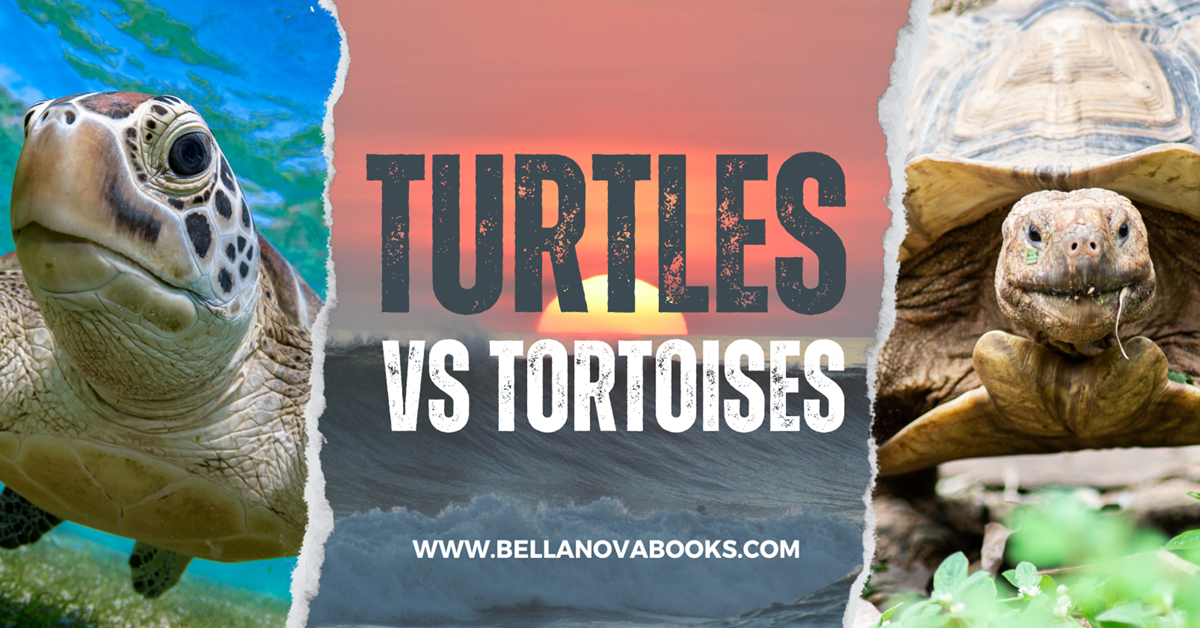
What Makes a Turtle a Turtle, and a Tortoise a Tortoise?
It’s the question on every nature lover’s lips! What is the difference between a turtle and a tortoise? Well, all tortoises are turtles, but not all turtles are tortoises. Hmm… let’s break that down!
The Shell Tells a Tale
Imagine carrying your home on your back everywhere you go. Convenient, right? Well, that’s what turtles and tortoises do! But not all shells are created equal.
Turtles and tortoises both boast hard, protective shells. A turtle’s shell is flatter and streamlined, perfect for gliding through water. Their cousin, the tortoise, however, sports a domed shell that’s just right for warding off potential predators on land. So next time you see one of these guys, take a peek at their shell—it’s their best tell-tale sign!

Where’s Home?
Next up on our list is their preferred address—where do they hang out the most?
Most turtles are homebodies who prefer to stick to the water. You’ll find them in oceans, seas, rivers, and lakes, just chilling and going about their turtle-y business.
On the flip side, tortoises are more of the ‘dry land’ type. Sure, they might take a dip to cool off or have a drink, but they spend the majority of their time on solid ground.

Let’s Talk About Diet
Food—everyone’s favorite topic, right? Turtles and tortoises aren’t that different from us when it comes to enjoying a good meal.
Many turtles are omnivores. This means they enjoy a varied diet that includes both plants and meat. Don’t be surprised if you see a turtle munching on some underwater vegetation or chasing after a tasty fish.
In contrast, most tortoises are herbivores. Their ideal meal is a plate full of fresh veggies and juicy fruit. However, they’re known to munch on the occasional worm or bug when the opportunity arises.

Limber Limbs or Sturdy Stumps?
Have you ever noticed the legs of a turtle or tortoise? No? Well, that’s about to change!
A turtle’s legs are built for swimming. They either have webbed feet for paddling in fresh water or flippers for cruising the ocean currents if they’re a sea turtle.
Tortoises, on the other hand, have sturdy, column-like legs made for land roving. Their legs look a bit like an elephant’s, don’t they? Sturdy and strong, ready for long treks across various landscapes.

Lifespan: The Longevity Game
Last but not least, we need to talk about age. If you’ve heard the phrase ‘old as a tortoise,’ there’s a good reason for it!
Turtles can live a pretty long time, with some reaching an age of around 40 to 60 years old. That’s a lot of birthday candles!
But tortoises? They take longevity to a whole new level. These creatures can live 80 to 150 years, with some even hitting the 200 mark! Now that’s what I call aging gracefully.
Wrapping it Up: Turtle or Tortoise?
So, there you have it! The major differences between our shelled friends. It’s been quite a journey, hasn’t it?
Just remember—check the shell, their favorite hangout, their meal choices, take a look at their legs, and consider their age. Now, you’ll be able to tell whether you’re looking at a turtle or a tortoise!
And hey, if you want to learn more, consider checking out “The Ultimate Turtles Book“. It’s a treasure trove of turtle and tortoise trivia that’s sure to make you the hit of your next class discussion or family dinner.

Stay curious, friends, and remember—no matter how much you learn, there’s always more to discover in the amazing world of turtles and tortoises!





